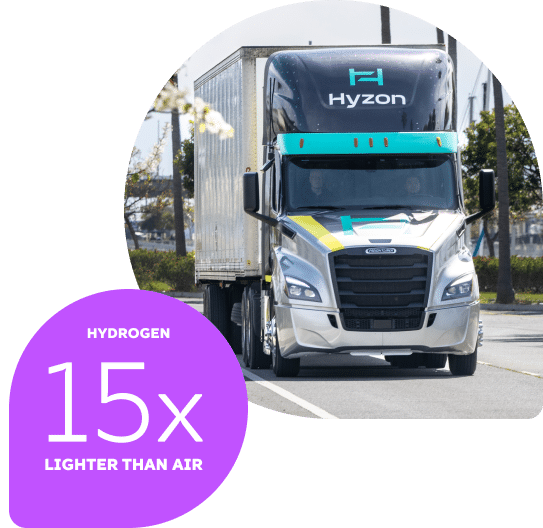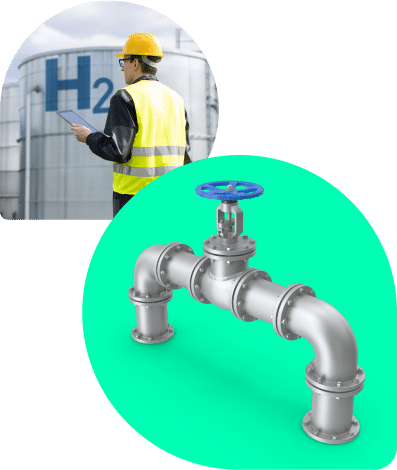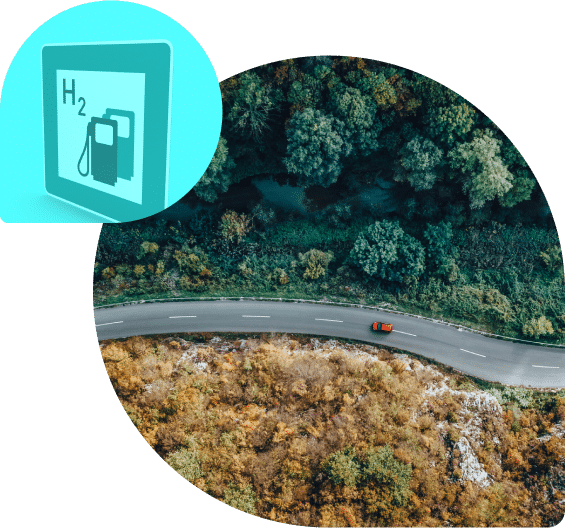
What is hydrogen?
Hydrogen is the simplest, most abundant element in the universe.
Naturally occurring hydrogen — often called geologic hydrogen — exists trapped beneath Earth’s surface. But as a colorless, odorless, and tasteless gas that is 15 times lighter than air, hydrogen can be difficult to find and harness in nature.
Naturally occurring hydrogen — often called geologic hydrogen — exists trapped beneath Earth’s surface. But as a colorless, odorless, and tasteless gas that is 15 times lighter than air, hydrogen can be difficult to find and harness in nature.
Scientists continue to develop processes to identify accessible reserves of geologic hydrogen buried underground at concentrations economically viable to extract. And new technologies are under development to capture, chemically process, and remove that hydrogen in sustainable ways.
Most hydrogen in use today is produced by separating hydrogen atoms from other liquids, gases, and solids found in nature. Hydrogen combined with oxygen makes water. Hydrogen combined with carbon makes hydrocarbons like natural gas, coal, and oil.

How is hydrogen made?
Separate from geologic hydrogen, the most common categories of hydrogen are gray, blue, and green hydrogen — each with distinct characteristics and sustainability impacts shaped by their production.
Equally sustainable is hydrogen produced from carbon negative renewable natural gas (RNG) sourced from landfills, wastewater treatment facilities, and digesters fed by food, forest, and agricultural waste. RNG can be utilized to produce clean hydrogen directly using SMR or to produce the carbon-negative electricity used to produce hydrogen from water through electrolysis.
How is hydrogen used today?
Hydrogen has a high energy content, so it is ideal for use in energy-intensive industrial processes.
A kilogram of hydrogen has almost three times more energy content than one kilogram of petroleum fuel. Close to half of all hydrogen produced globally is used in the refinement of petroleum products. Almost all remaining is used in key manufacturing sectors, including the steel, iron, and ammonia industries. As ammonia is the primary component of fertilizer production, hydrogen is an integral part of the world’s food production.

Transportation end use
Because of its energy density, light weight, and lack of greenhouse gas (GHG) emissions when used to power vehicles, hydrogen can become a key ultra-clean transportation fuel for hard-to-abate sectors like marine shipping, rail, transit buses, and freight trucking. Its only emission when used to produce electricity in fuel cells is water vapor.
As a gas, hydrogen can take up a good deal of space, so it’s best compressed or converted into liquid, similar to natural gas motor fuel. Like natural gas, hydrogen motor fuel can be safely transported and easily stored for dispensing and later usage.
Outlook + value proposition
Hydrogen shows much long-term promise as a zero emission motor fuel for commercial fleets of all sizes and applications.
Widespread adoption by commercial fleets requires:
- Buildout of comprehensive refueling infrastructure across North America that can accommodate medium- and heavy-duty trucks
- Reducing the production and distribution costs of hydrogen motor fuel relative to other options
- Increasing the availability and affordability of hydrogen-fueled medium- and heavy-duty vehicles
- Educating the public and stakeholders about the vast benefits and safety of hydrogen motor fuel
Hydrogen transportation applications to date have mainly focused on light-duty personal vehicles employing fuel cell technology.
Hydrogen transportation applications to date have mainly focused on light-duty personal vehicles employing fuel cell technology.
When used in fuel cells, hydrogen produces electricity to power vehicles, emitting only water vapor and heat, thus eliminating noxious tailpipe emissions and drastically reducing environmental impact.
Many original equipment and engine manufacturers are developing fuel agnostic internal combustion engines (ICEs) and powertrain systems as well. These ICEs can be powered by hydrogen fuel to deliver zero greenhouse gas emissions while optimizing high efficiency, torque, and performance. Hydrogen used to power ICEs also significantly reduces the emission of air pollutants such as nitrogen oxides, particulate matter, and hydrocarbons, contributing to cleaner air quality.
Hydrogen shows much promise as a long-term commercial transportation fuel source due to its inexhaustible supply, lack of GHG emissions while in operation, effective storage, and — relative to battery electric — fast fueling and no weight penalty. Key first-to-deploy commercial sectors include public transit and return-to-base and fixed-route freighting and parcel delivery.drocarbons, contributing to cleaner air quality.

Government support
Increased governmental financing exists for the development of hydrogen resources and transportation end uses, particularly for cleaner sources of hydrogen.
Support largely is based on the recognized need to decarbonization the transportation sector and the growing acknowledgement that certain sectors of transportation will be difficult to decarbonize and nearly impossible to electrify. Enactment of the Infrastructure Investment and Jobs Act (IIJA) and Inflation Reduction Act (IRA) provide billions in new funding and tax credits intended to support and advance the production of clean sources of hydrogen fuel.



